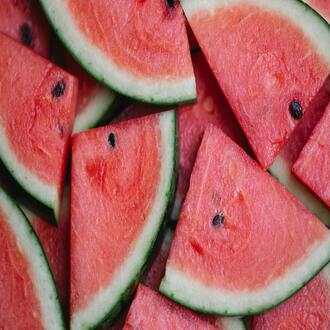Transcription Allergens in seafood
Shellfish is one of the foods that causes the greatest number of allergic reactions, despite not being a widely consumed food like milk, eggs, fish or meat.
The incidence of shellfish allergies is still much higher in coastal regions, where it is incorporated into the dietary habits of the population. In recent times the consumption of shellfish has become more widespread, so that the number of people attending consultations with allergic crises has increased.
Characteristics of allergic reactions to shellfish:
- People allergic to shellfish can react just by inhaling cooking vapors or particles released during handling.
- Mites have proteins similar to shellfish, so people allergic to mites have a higher risk of suffering allergic reactions to shellfish than those who are not. Up to 80% of people allergic to shellfish are also allergic to mites.
- Some people allergic to shellfish may react to fish, although no cross-reactivity between these foods has been demonstrated.
- Symptoms usually appear between 15 minutes and 2 hours after ingestion, although in patients with shellfish allergy, with respiratory and skin symptoms, delayed reactions have been described, up to 7 hours after ingestion.
- It is possible to suffer reactions provoked by accelerating factors coincident with the ingestion of the shellfish, as it happens when before eating it an anti-inflammatory was taken.
- The most frequent symptoms caused by allergic reactions to shellfish are urticaria, dermatitis and acute angioedema. It also causes respiratory symptoms and anaphylactic shock in a smaller number of patients.
- Protein contact dermatitis and contact urticaria may occur.
- They are caused by handling the food and are manifested by itching, redness, scaling, small blisters and hives, especially on the hands.
- Aerosolized shellfish allergens can cause symptoms of rhinoconjunctivitis and asthma. This sensitization pathway is the cause of occupational asthma.
- In the food industry there is an identified occupational pathology manifested by contact dermatitis, urticaria and occupational asthma, which are caused by the development of allergies due to the handling of shellfish.
- Shellfish allergy mainly affects the adult population, with a lower incidence in children.
- Most patients allergic to shellfish are allergic for life, so avoidance measures should always be observed.
- Cooked shellfish maintains all its allergenicity and the cooking water contains the same allergens.
- The types of shellfish that cause allergies most frequently are:
Crustaceans, i.e. shellfish with legs:
- Examples: Shrimps, Prawns, Crayfish, Lobsters, Crayfish.
Bivalve mollusks:
- Examples: Mussels, Clams, Oysters.
Gastropod mollusks.
Examples: Snails, Periwinkles.Cephalopod mollusks.
Examples: Squid, Cuttlefish, Octopus.
Allergenic components in shellfish: Although shellfish have a great variety of proteins, only a few are allergenic and most of them are water-soluble and thermostable glycoproteins.
Tropomyosin: is the major allergen of crustaceans and may account for cross-reactivity between different species of crustaceans and mollusks. It also justifies cross-reactivity with other inedible arthropods, such as mites. Food products that may contain shellfish and crustaceans:
- Shellfish flavorings (crab or clam extract).
- Surimi.
- Squid ink.
- Soups and broths.
- Pizzas.
- Paella.
- Frozen rolls.
- Salads.
Seafood and crustaceans most commonly used as ingredients:
- Krill: is a crustacean that is marketed as a food ingredient in extract form.
Among its permitted uses are:
- Food supplements.
- Salad sauces.
- Breakfast cereals.
- Dietary foods for special medical purposes.
- Food products for low calorie diets.
- Dairy products.
- Fat spreads.
Chitosan or chitosan: commercial chitosan comes from the shells of crustaceans, such as shrimps, lobsters and crabs. Among its permitted uses are:
- Coagulation of milk caseins and cheese production.
- Filtration or purification of water.
- Wine and beer clarification.
- Food supplements as part of slimming products.
- It is also used in the cultivation of indoor and outdoor plants, as an aid to growth, because it promotes the defense of plants against fungal infections.
seafood




